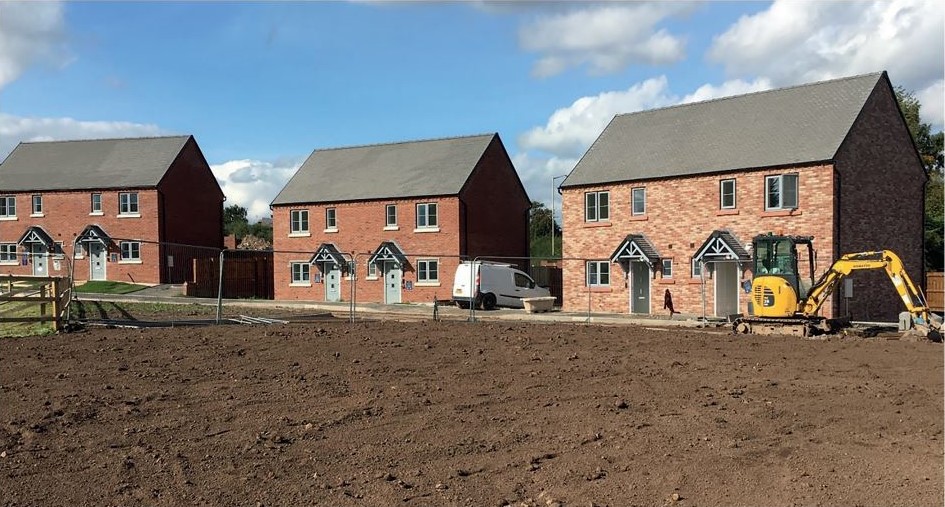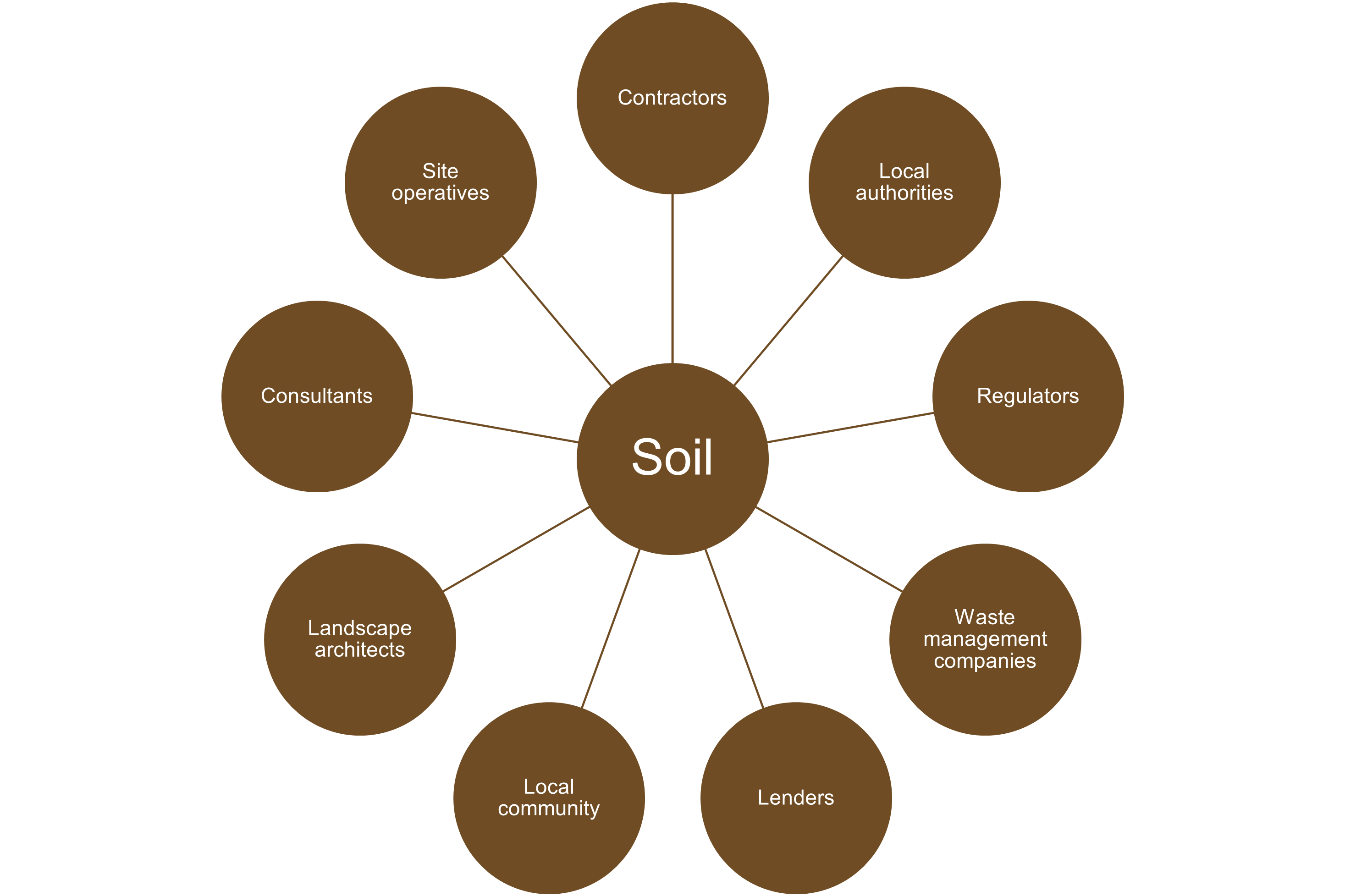Opinion piece: Can we ever achieve responsible soil management in construction projects?
Joanne Kwan, Senior Research Manager and Sustainable Land Reuse Lead at CIRIA, explores how the construction industry is responding to the challenge of responsible soil management to deliver environmental wider benefits.

Responsible soil management means looking after soil as resource so that soil health and functions can be preserved or improved in parallel with other project objectives. This is often difficult in construction projects because:
Soil is ‘Jekyll and Hyde’
Soil delivers a number of functions to support life on Earth (Table 1). However, ‘surplus’ soil which is generated in most construction projects is often considered to be a by-product of construction activities and a ‘waste’ material.

Table 1: Ecosystem goods and services delivered by healthy soil (adapted from the Soils and Stone Report)
Soil is a complex material
There are more than 700 different types of soil [1] in the UK. The nature of the soil will determine its ability to perform its functions. It is because of this complexity that some construction professionals do not adequately consider the type of soil and reuse options in their projects. In many cases, soil is disposed to landfill unnecessarily.
This was discussed at the recent Futurebuild 2024 seminar on “Responsible soil management”. Sue Illman, Managing Director of Illman Young Landscape Design and recipient of the susdrain SuDS Awards 2023 Outstanding Contribution to SuDS, emphasised the importance of having the right soil for the right Sustainable Drainage Systems (SuDS) components.
Schedule 3 of the Flood and Water Management Act was rolled out in Wales in 2019. The Department for Environment Food and Rural Affairs (Defra) is working on implementing it in England (no timing confirmed). Schedule 3 makes SuDS a mandatory component for all new developments, stressing how critical soil is to create and sustain flood risk benefits (and additional benefits such as water quality, biodiversity, amenity, etc.) from SuDS.
Soil is difficult to manage
This is because:
- the different routes for compliance in reuse eg permit, exemptions, exclusions, Definition of Waste: Code of Practice (DoW:CoP), end of waste protocols, regulatory position statements are difficult to understand.
- soil health is ‘hard’ to assess as there are very few soil health indicators available.
- soil removal is often devolved through several layers of sub-contractors (along with the risk and reward).
- soil is an area of business that is being targeted by organised criminal groups (eg misclassification, illegal deposits).
How is the construction industry responding?
Most construction professionals are aware of the importance of soil health to help them comply with soil-related regulations and meet national targets such as Biodiversity Net Gain and net zero carbon in their projects. However, it is often not considered in the soil management process.
Despite the UK government’s continuous drive to reduce waste to landfill, excessive amounts of surplus soil are disposed this way. In fact, soil makes up the second largest proportion (27%, 50.6 million tonnes) of waste produced and 58% of all material being sent to landfill [2].
Why is soil from construction projects being disposed in landfill?
The challenge for construction professionals is knowing how to implement a soil management approach that can support the environment, nature recovery, and biodiversity.
The complexity and relatively low environmental priority of soil in many construction projects leads many people to opt for landfill when choosing soil management options. Landfill is perceived to be relatively ‘easy and less time consuming’, despite it becoming more expensive. Most people understand soil is a resource and can be reused. However, construction programmes are often tight, soil reuse regulations are difficult to comply with, and the lack of definitive regulator’s guidance do little to support alternative options.
How can the construction industry achieve responsible soil management?
In order to ensure that soil can be managed responsibly, there needs to be:
Change of mindset and more training
Soil is not just a by-product of construction activities but a resource that could add value to projects. However, this is not always apparent in financial terms. Training should be provided to construction professionals on the benefits of good soil health and how to improve it in projects.
More assessment tools and methods
Cost-benefit analysis should be carried out at the planning stage of soil management. Assessment tools are needed to measure and compare carbon emissions, biodiversity, and other relevant environmental considerations with the financial performance of the different soil management soil options.
Incorporating criteria for assessing soil management options in environment assessment methods such as
BREEAM,
BREEAM Infrastructure (formerly CEEQUAL), and
LEED could motivate construction professionals to become more responsible in soil management.
More collaboration
In order to deliver the ecological system services that soil is responsible for, the management approach needs to meet many geotechnical, geoenvironmental, ecological, soil science, and soil health requirements.
It is difficult to achieve this if clients, consultants, contractors, and soil scientists work in silos to fully understand and appreciate every aspect of this wide and complex subject.
It is important that these key stakeholders (Figure 1) collaborate early in the soil management process.

Figure 1: Stakeholders involved in soil management
Application of more good practice in projects
There is a vast amount of guidance published by the UK government and other organisations. CIRIA’s report
Sustainable Management of Surplus Soil and Aggregates from Construction (C809) published in 2023 is currently the only comprehensive good practice guide for soil management in England, Wales, Scotland, and Northern Ireland. This report also provides examples of good practice to help construction professionals manage surplus soil as a resource and a waste.
There are also many soil-related groups and forums set up by organisations including the
Sustainable Soils Alliance and
Society for the Environment Soils and Stones Project.
CIRIA’s Soil Community of Practice, established in 2022, created the
CIRIA Soil Community web portal which brings together cross-sector organisations and professionals, and contains a wealth of guidance on both soil health and management of soil from construction projects.
We need to apply good practice and knowledge developed from these reports and other activities to more projects. This will also help construction professionals to demonstrate they are acting responsibly in soil management.
References
- The Royal Society – Soil structure and its benefits. An evidence synthesis
- Office for Environmental Protection – Progress in improving the natural environment in England 2022/2023